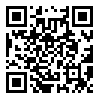目的 探讨柴胡疏肝汤对癫痫大鼠海马组织中B细胞淋巴瘤2(Bcl⁃2)、含NLR家族pyrin结构域1因子( NLRP1)、Caspase⁃3、Caspase⁃1表达的影响。方法 基于生物信息学分析筛选柴胡疏肝汤治疗癫痫的核心活性成分及核心靶点。将100只SD大鼠随机分为癫痫组(n=80)与空白组(n=20)。对空白组大鼠不作任何处理,对癫痫组大鼠建立癫痫模型,成功建模后将其随机分为模型组、柴胡疏肝汤低剂量组、柴胡疏肝汤中剂量组、柴胡疏肝汤高剂量组,每组20只。给予柴胡疏肝汤低、中、高剂量组大鼠柴胡疏肝汤(2.5 mg/100 g、5 mg/100 g、10 mg/100 g)灌胃,给予模型组及空白组大鼠生理盐水灌胃。给药4周后,比较模型组与柴胡疏肝汤低、中、高剂量组的大鼠癫痫发作等级,然后处死5组大鼠并获取其海马组织,分别采用实时荧光定量PCR和Western blot检测Bcl⁃2、NLRP1、Caspase⁃3、Caspase⁃1的 mRNA及蛋白表达水平。结果 (1)柴胡疏肝汤治疗癫痫的核心活性成分包括槲皮素、山柰酚、柚皮素、β⁃谷甾醇、川陈皮素、异鼠李素、木犀草素、豆甾醇、7⁃甲氧基⁃2⁃甲基异黄酮、罗通定,核心靶点包括Bcl⁃2、NLRP1、Caspase⁃3、Caspase⁃1。槲皮素、山柰酚、柚皮素、β⁃谷甾醇、川陈皮素和木犀草素与核心靶点表现出较好的结合活性。(2)干预后,与模型组相比,柴胡疏肝汤中、高剂量组的癫痫发作等级降低(P<0.05);与柴胡疏肝汤低剂量组相比,柴胡疏肝汤中、高剂量组的癫痫发作等级降低(P<0.05)。与空白组比较,模型组Bcl⁃2的mRNA和蛋白表达水平降低,NLRP1、Caspase⁃3、Caspase⁃1的mRNA和蛋白表达水平升高(P<0.05);与模型组比较,柴胡疏肝汤各剂量组Bcl⁃2的mRNA和蛋白表达水平升高,NLRP1、Caspase⁃3、Caspase⁃1的mRNA和蛋白表达水平降低(P<0.05);柴胡疏肝汤低剂量组、柴胡疏肝汤高剂量组、柴胡疏肝汤中剂量组Bcl⁃2的mRNA和蛋白表达水平依次升高,柴胡疏肝汤中剂量组、柴胡疏肝汤低剂量组、柴胡疏肝汤高剂量组NLRP1的mRNA和蛋白表达水平依次升高,柴胡疏肝汤高剂量组、柴胡疏肝汤低剂量组、柴胡疏肝汤中剂量组Caspase⁃3、Caspase⁃1的mRNA和蛋白表达水平依次升高(P<0.05)。结论 柴胡疏肝汤可能通过上调大鼠海马组织中Bcl⁃2的表达,抑制NLRP1、Caspase⁃3、Caspase⁃1的表达,发挥抗癫痫作用。
广西医学 页码:1528-1537
作者机构:何乾超,硕士,主任医师,研究方向为脑血管及心身疾病中西医结合治疗。
基金信息:广西自然科学基金(2020GXNSFAA238007);广西科技计划项目(桂科AD20238028);国家中医药管理局高水平中医药重点学科建设项目(ZYYZDXK⁃2023166);广西中医药大学“歧黄工程”高层次人才团队培育项目(202410);广西中医药重点学科建设项目(GZXK⁃Z⁃20⁃13)
- 中文简介
- 英文简介
- 参考文献
Objective To investigate the effect of Chaihu Shugan Decoction on the expressions of B⁃cell lymphoma 2 (Bcl⁃2), NLR family pyrin domain containing 1 (NLRP1), Caspase⁃3, and Caspase⁃1 in hippocampus tissues of rats with epilepsy. Methods The core active components and core targets of Chaihu Shugan Decoction for the treatment of epilepsy were analyzed and screened based on bioinformatics. A total of 100 SD rats were randomly assigned to epilepsy group (n=80) or blank group (n=20). Rats of the blank group received no treatment. Epileptic model of rats in the epilepsy group was established, after successful modeling, rats of the epilepsy group were randomly assigned to model group, or Chaihu Shugan Decoction in low⁃dose, medium⁃dose, and high⁃dose groups, with 20 rats in each group. Rats of the Chaihu Shugan Decoction in low⁃dose, medium⁃dose, and high⁃dose groups received intragastric administration of Chaihu Shugan Decoction (2.5 mg/100 g, 5 mg/100 g, 10 mg/100 g), whereas the model and blank groups received intragastric administration of normal saline. After 4 weeks of administration, seizure grade of rats with epilepsy was compared between the model group and the Chaihu Shugan Decoction in low⁃dose, medium⁃dose, and high⁃dose groups, and then rats of the five groups were killed for obtaining their hippocampus tissues. Expressions of mRNA and protein of Bcl⁃2, NLRP1, Caspase⁃3, and Caspase⁃1 were detected by employing the real⁃time fluorescent quantitative PCR and Western blot. Results (1) The core active components of Chaihu Shugan Decoction for the intervention of epilepsy contained quercetin, kaempferol, naringenin, β⁃sitosterol, nobiletin, isorhamnetin, luteolin, stigmasterol, 7⁃methoxy⁃2⁃methyl isoflavone, hyndarin. The core targets included Bcl⁃2, NLRP1, Caspase⁃3, and Caspase⁃1. Quercetin, kaempferol, naringenin, β⁃sitosterol, nobiletin and luteolin showed favorable binding activity with the core targets. (2) After intervention, compared with the model group, seizure grade of epilepsy in Chaihu Shugan Decoction in medium⁃does and high⁃dose groups was reduced (P<0.05); furthermore, compared with the Chaihu Shugan Decoction in low⁃dose group, seizure grade of epilepsy in the Chaihu Shugan Decoction in medium⁃dose and high⁃dose groups was reduced (P<0.05). Compared with the blank group, the model group exhibited decreased mRNA and protein expressions of Bcl⁃2, whereas elevated mRNA and protein expressions of NLRP1, Caspase⁃3, and Caspase⁃1 (P<0.05). Compared with the model group, Bcl⁃2 mRNA and protein expressions of the Chaihu Shugan Decoction in various doses groups were elevated, and mRNA and protein expressions of NLRP1, Caspase⁃3, and Caspase⁃1 were decreased (P<0.05). Expressions of Bcl⁃2 mRNA and protein were elevated successively in the Chaihu Shugan Decoction in low⁃, high⁃, and medium⁃dose groups, and mRNA and protein expressions of NLRP1 were elevated successively in the Chaihu Shugan Decoction in medium⁃, low⁃, and high⁃dose groups, as well as Caspase⁃3 and Caspase⁃1 mRNA and protein expressions were also successively elevated in the Chaihu Shugan Decoction in high⁃, low⁃, and medium⁃dose groups (P<0.05). Conclusion Chaihu Shugan Decoction may inhibit expressions of NLRP1, Caspase⁃3, and Caspase⁃1, so as to exert antiepileptic effect through up⁃regulating expression of Bcl⁃2 in hippocampus tissues in rats.
- ref
- ref
- ref
- ref
- ref
- ref
- ref
- ref
- ref
- ref
- ref
- ref
- ref
- ref
- ref
- ref
- ref
- ref
- ref
- ref
- ref
- ref
- ref
- ref
- ref




 注册
注册 忘记密码
忘记密码 忘记用户名
忘记用户名 专家账号密码找回
专家账号密码找回 下载
下载 收藏
收藏
